What You Don’t Know about Email Security Protocols? Could Cost You Millions
One email can destroy everything. This blog breaks down the must-know email security protocols keeping modern businesses safe. From SPF to AI-powered detection, explore real-world examples, expert strategies, and a healthcare case study that proves one thing: protection is not optional, it’s urgent.
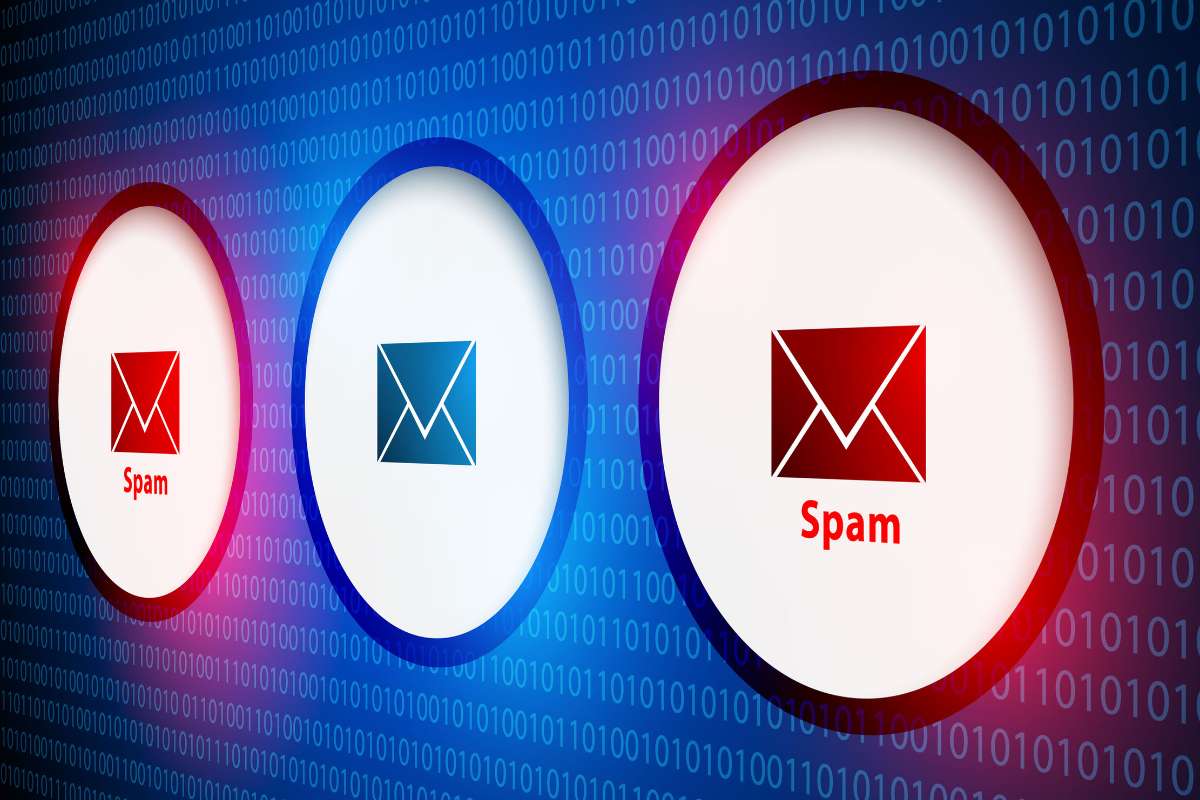
It started with a single email. A well-placed subject line. A familiar-looking sender. A brief moment of distraction. And just like that, thousands of confidential files were gone.
Unfortunately, this isn’t a hypothetical story. It’s the daily reality for businesses, healthcare networks, and even government agencies around the world.
Email remains the most targeted entry point for cybercriminals. It’s where employees drop their guard, where trust is assumed, and where the smallest mistake can open the door to catastrophic breaches.
That’s why email security protocols are your business’s first line of defense. These invisible layers of protection separate a secure, functioning company from one headline away from disaster.
In this blog, we’ll dive into the must-know protocols protecting your inbox, the psychology behind email vulnerabilities, and the real-world cost of leaving your communications unguarded. Because in 2025, what you don’t know about email security might already be hurting you.
The Psychology of Trust and Why Email Gets Abused
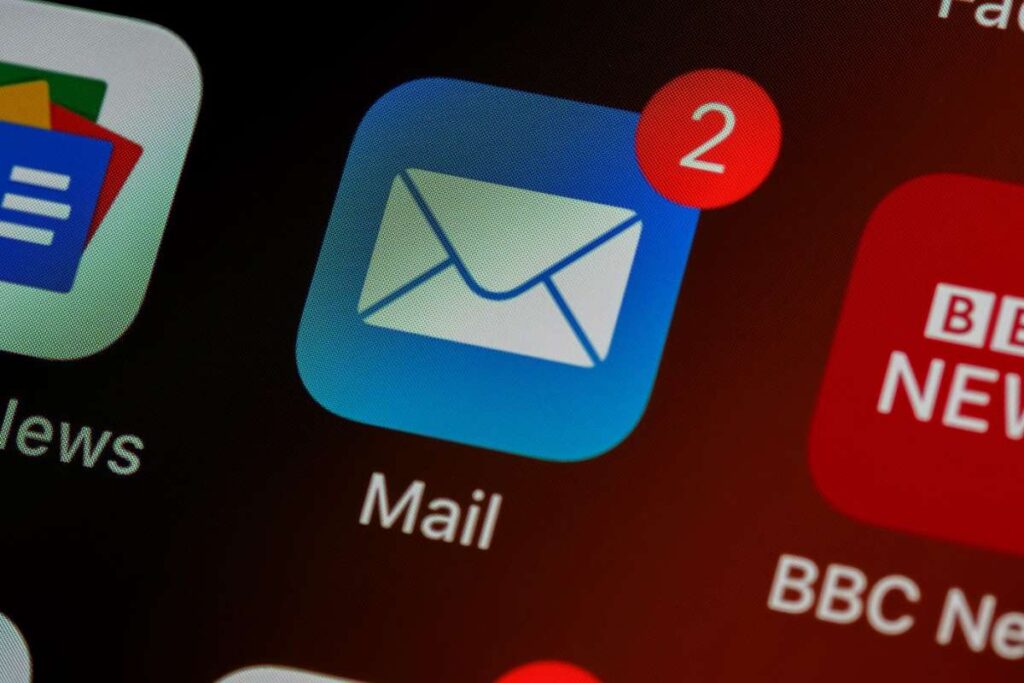
According to a 2024 report by Perception Point, phishing, business email compromise (BEC), and malicious attachments are rising year over year, especially in enterprise environments.
What Are Email Security Protocols? (And Why Should You Care?)
Email security protocols are a set of rules and technologies designed to protect email communication from unauthorized access, manipulation, and leakage. They ensure:
1. Authentication:
Is the sender who they say they are?
Also Read;- The Importance of Multi-Factor Authentication: Protecting What Matters Most
2. Encryption:
Can outsiders read this message?
Also Read :– End-to-End Encryption: What It Means and Why It Matters for Your Privacy
3. Integrity:
Has this email been tampered with?
Also Read:- Navigating the Ethical Maze of AI: Innovation Meets Integrity
These protocols work together to stop common threats like phishing, spoofing, man-in-the-middle attacks, and data leaks.
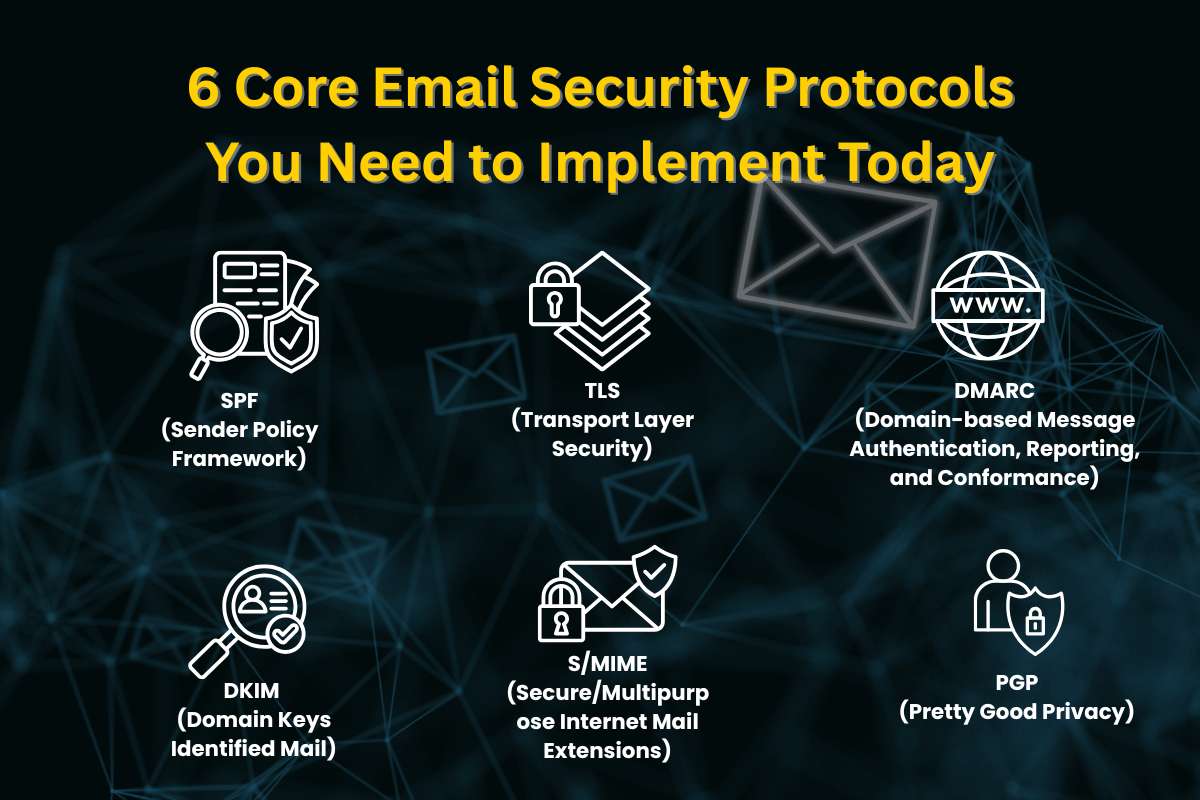
6 Core Email Security Protocols You Need to Implement Today
1. SPF (Sender Policy Framework):
SPF lets domain owners specify which mail servers can send on their behalf. It helps prevent spoofing. Without it, anyone can impersonate your brand.
2. DKIM (DomainKeys Identified Mail):
DKIM attaches a digital signature to your email header. It verifies that the content hasn’t been altered and proves the sender’s legitimacy.
3. DMARC (Domain-based Message Authentication, Reporting, and Conformance):
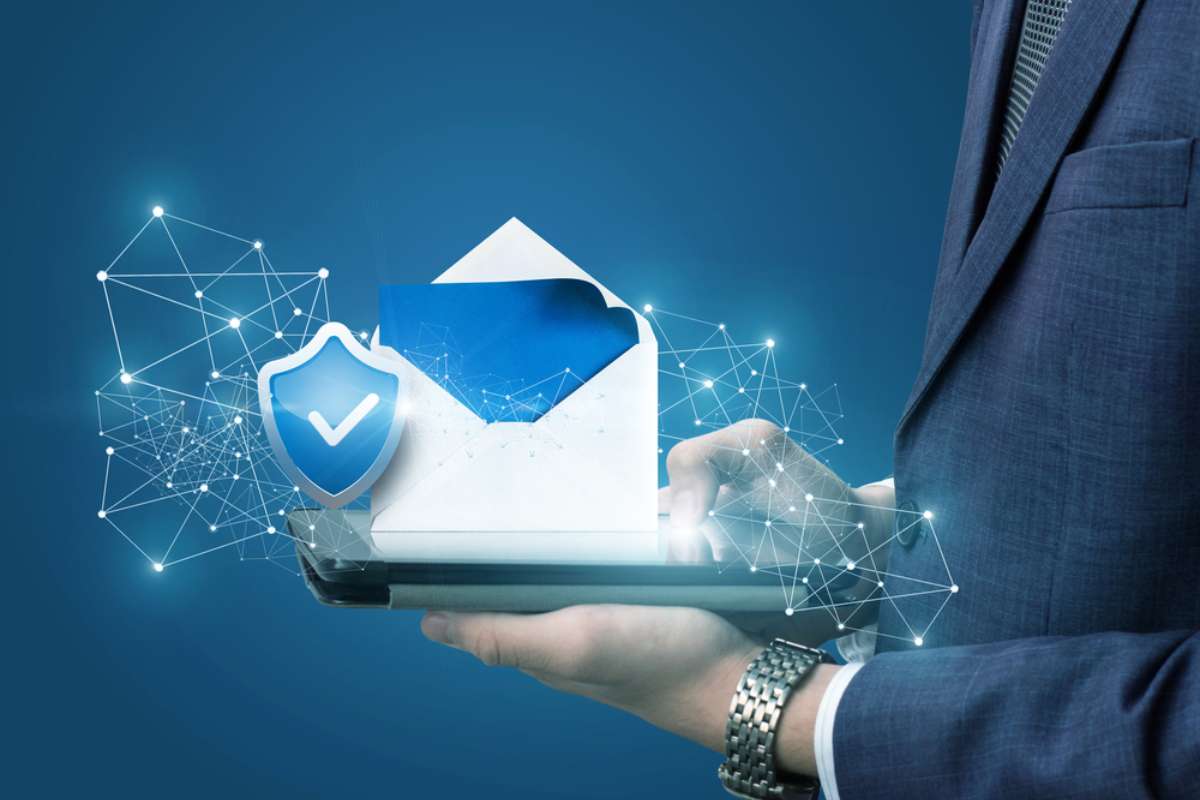
4. TLS (Transport Layer Security):
TLS encrypts your emails while they travel from sender to recipient. Think of it as a sealed envelope in digital form.
5. S/MIME (Secure/Multipurpose Internet Mail Extensions):
S/MIME provides end-to-end encryption and digital signatures, ideal for industries with compliance needs like healthcare and finance.
6. PGP (Pretty Good Privacy):
PGP gives users full control of encryption keys, allowing end-to-end encryption without trusting a third party.
These six email security protocols build the backbone of secure digital correspondence.
The Cost of Ignoring Email Security Protocols
Still wondering if it’s worth it? Consider this:
- In 2023 alone, business email compromise caused $2.7 billion in losses globally (FBI IC3 report).
- A breach of HIPAA-regulated data due to unsecured email can cost up to $1.5 million in fines per incident.
- Gartner predicts that by 2026, 60% of organizations will experience email-based data leaks if they fail to adopt basic protocols.
These numbers aren’t fear-mongering. They’re warnings.
Expert Opinion: Why Protocol Stacking Is the Key to Bulletproof Security
Cybersecurity professionals stress that no single email security protocol is enough. According to Darktrace, layering SPF, DKIM, and DMARC provides a synergistic defense, while encryption through TLS or S/MIME ensures message confidentiality.
“You can’t just choose one and hope for the best,” says Itay Glick, VP at OPSWAT. “The best protection comes from protocol stacking, AI integration, and continuous monitoring.”
Case Study: Healthcare and the Real-World Stakes of Email Security
In a 2022 case study by CommonSpirit Health, email encryption and Data Loss Prevention (DLP) technologies were deployed in a healthcare network to protect patient records. The system used policy-based DLP integrated with TLS and S/MIME encryption.
The result?
- 40% reduction in phishing-based data leaks
- 100% compliance with HIPAA regulations
- Streamlined internal communication workflows
The case proves that integrating email security protocols doesn’t just reduce risk. It builds compliance, trust, and operational efficiency.
Best Practices: Building Your Email Security Protocol Stack
To get started, follow this roadmap:
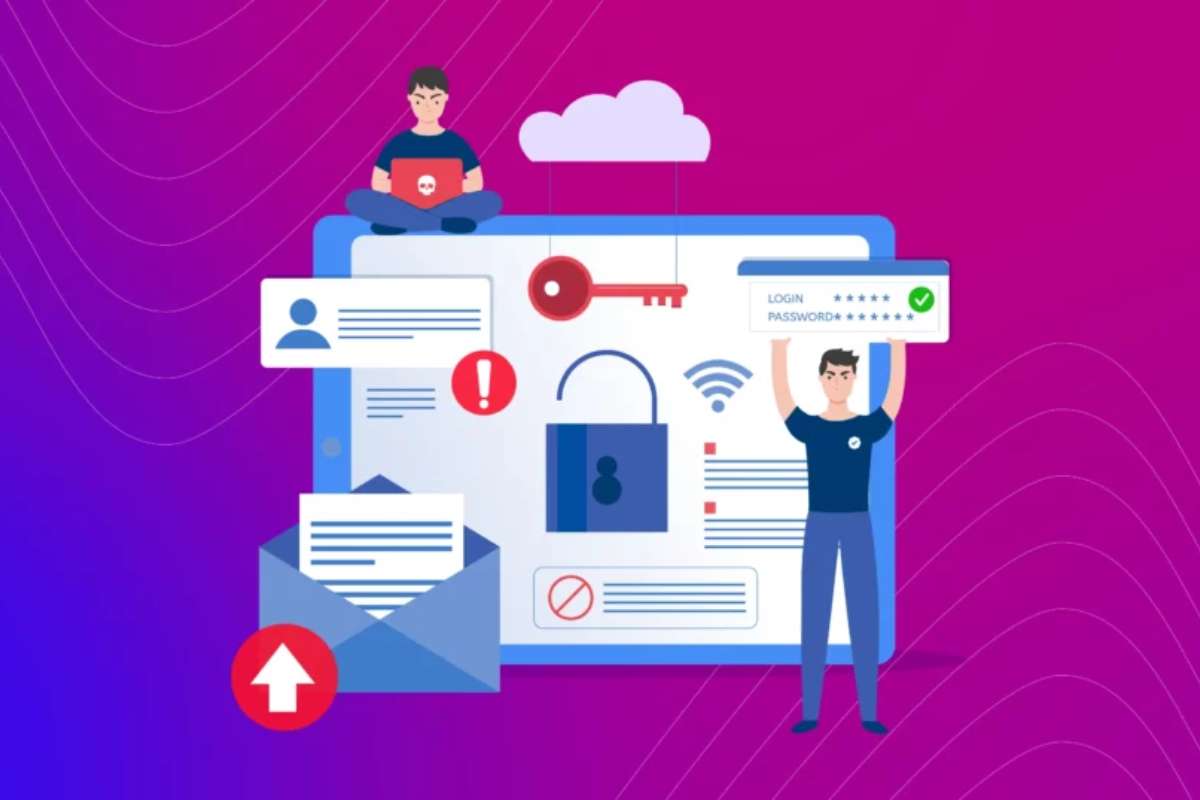
- Audit Your Current Infrastructure Know what protocols you already use.
- Deploy SPF, DKIM, and DMARC These three must form the foundation.
- Enforce TLS Across All Servers Ensure all data is encrypted in transit.
- Use End-to-End Encryption When Possible Especially in healthcare, finance, or legal fields.
- Monitor and Adjust Use analytics and reports to track deliverability and attacks.
- Educate Your Team: Protocols only go so far Human error remains a leading threat.
Emerging Trends in Email Security
As cyber threats evolve, so do the defenses. One of the most significant advancements is AI-driven threat detection, where machine learning models analyze user behavior and email communication patterns to detect anomalies in real time. This proactive approach helps identify phishing, spoofing, and compromised accounts before damage occurs. Another key trend is the rise of Zero Trust email architecture, which operates on the principle that no email—regardless of origin—should be trusted until verified, adding a critical layer of scrutiny to inbound communications.
Additionally, protocols like BIMI (Brand Indicators for Message Identification) are gaining traction, allowing organizations to display verified brand logos beside authenticated emails. This not only enhances trust and visibility in crowded inboxes but also helps recipients quickly recognize legitimate senders, reducing the risk of impersonation. Together, these trends signal a shift toward smarter, more secure, and brand-forward email ecosystems.
Conclusion: Email Security Protocols Are Business Critical
Let’s go back to that single email, the one that could compromise your entire organization.
Now imagine your systems recognize the sender’s identity, verify the integrity of the content, encrypt the message in transit, and flag anomalies using AI. That’s the power of implementing layered email security protocols.
You’ve learned that SPF, DKIM, DMARC, TLS, and S/MIME aren’t just acronyms; they’re business-critical armor. You’ve seen how real-world leaders in healthcare and tech are stacking these protocols to build resilience, trust, and compliance.
The truth is simple: email is not going away, and neither are the threats. But with the right strategy, knowledge, and tools, your organization can survive and fight back.